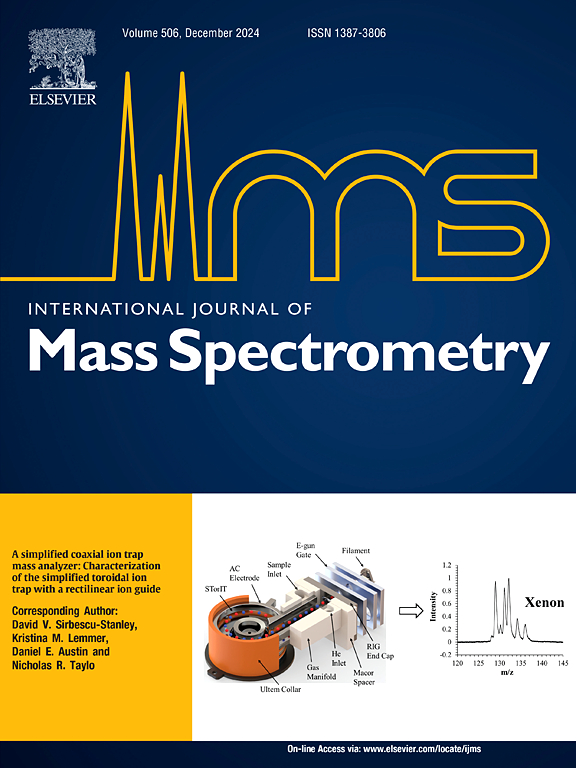Reactivity of 2-hydroxyethylhydrazinium nitrate (HEHN) with atomic iridium on graphite
IF 1.7
3区 化学
Q3 PHYSICS, ATOMIC, MOLECULAR & CHEMICAL
引用次数: 0
Abstract
In order to develop chemical kinetics models for the ignition and combustion of ionic liquid-based fuels, identification of the elementary steps in the thermal and catalytic decomposition of components such as 2-hydroxyethylhydrazinium nitrate (HEHN) is needed but is currently not well understood. The first decomposition step in protic ionic liquids such as HEHN is typically the proton transfer from the cation to the anion, resulting in the formation of 2-hydroxyethylhydrazine (HEH) and HNO3. In this investigation, temperature-programmed desorption mass spectrometry (TPD-MS) and x-ray photoelectron spectroscopy (XPS) are used to investigate the heterogeneous catalytic decomposition of HEHN with iridium. HEHN is introduced onto a highly-oriented pyrolytic graphite (HOPG) substrate (approx. 100 monolayers (ML)) and mass-selected iridium atoms (0–10 % ML) are deposited on the HOPG surface. The products can be identified by their masses, and product distributions are monitored as a function of surface temperature and Ir coverage. Formation of product species on the bare HOPG versus on the HOPG with increasing Ir coverage (5, 10 % Ir) indicates that the presence of iridium enhances various reactions. XPS confirms the presence of iridium on the surface and indicates the possible chemical bonding states involved. The products and their possible elementary reaction mechanisms are discussed.

2- 羟乙基肼硝酸盐(HEHN)与原子铱在石墨上的反应性
为了开发离子液体燃料点火和燃烧的化学动力学模型,需要确定 2-羟乙基肼硝酸盐(HEHN)等成分的热分解和催化分解的基本步骤,但目前对这些步骤的了解还不够深入。HEHN 等原生离子液体的第一个分解步骤通常是质子从阳离子转移到阴离子,从而形成 2-羟乙基肼(HEH)和 HNO3。本研究采用温度编程解吸质谱法(TPD-MS)和 X 射线光电子能谱法(XPS)来研究 HEHN 与铱的异相催化分解。将 HEHN 引入高取向热解石墨 (HOPG) 基质(约 100 单层 (ML)),然后在 HOPG 表面沉积经过质量选择的铱原子(0-10 % ML)。产物可通过其质量进行识别,并根据表面温度和铱覆盖率的函数对产物分布进行监测。在裸 HOPG 上形成的产物种类与在增加 Ir 覆盖率(5%、10% Ir)的 HOPG 上形成的产物种类相比,表明铱的存在增强了各种反应。XPS 证实了表面铱的存在,并指出了可能涉及的化学键状态。本文讨论了产物及其可能的基本反应机制。
本文章由计算机程序翻译,如有差异,请以英文原文为准。
求助全文
约1分钟内获得全文
求助全文
来源期刊
CiteScore
3.60
自引率
5.60%
发文量
145
审稿时长
71 days
期刊介绍:
The journal invites papers that advance the field of mass spectrometry by exploring fundamental aspects of ion processes using both the experimental and theoretical approaches, developing new instrumentation and experimental strategies for chemical analysis using mass spectrometry, developing new computational strategies for data interpretation and integration, reporting new applications of mass spectrometry and hyphenated techniques in biology, chemistry, geology, and physics.
Papers, in which standard mass spectrometry techniques are used for analysis will not be considered.
IJMS publishes full-length articles, short communications, reviews, and feature articles including young scientist features.

 求助内容:
求助内容: 应助结果提醒方式:
应助结果提醒方式:


